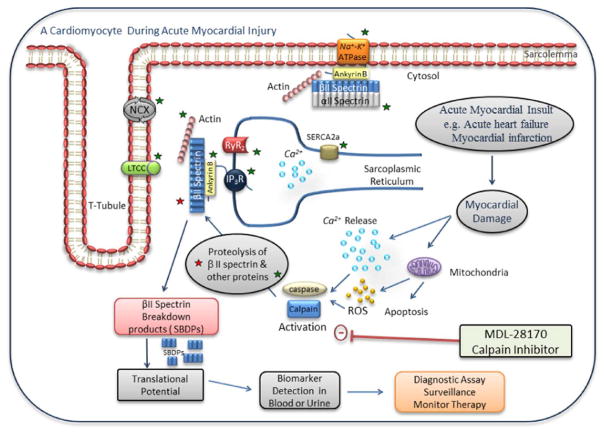Fig. 2.
A schematic view of a cardiomyocyte during acute myocardial injury. In the event of acute myocardial damage, Ca2 + dysregulation occurs leading to Ca2 + leak from the sarcoplasmic reticulum and subsequent activation of calpain and caspase enzymes. Increased levels of reactive oxygen species (ROS) released within the cardiomyocyte also activate Ca2 +dependent proteases. These proteases then cleave βII spectrin (denoted by red star) and other potential protein substrates (denoted by green stars) producing βII spectrin breakdown products (SBDPs) which could have translational potential as a biomarker of cardiac damage via detection in blood or urine. SBDPs could serve as early biomarkers in acute cardiac injury that would aid in the diagnosis, surveillance, and monitoring of patients who have acute cardiac syndromes. Of note the calpain inhibitor MDL-28170 prevents the degradation of βII spectrin, and this could serve as a therapeutic intervention for the stabilization of βII spectrin following acute cardiac injury [20]. (For interpretation of the references to colour in this figure legend, the reader is referred to the web version of this article.)

